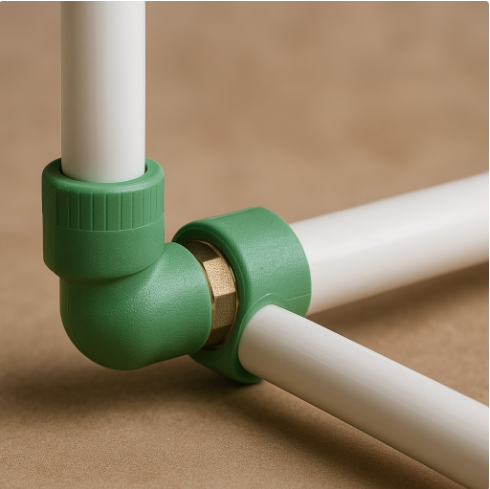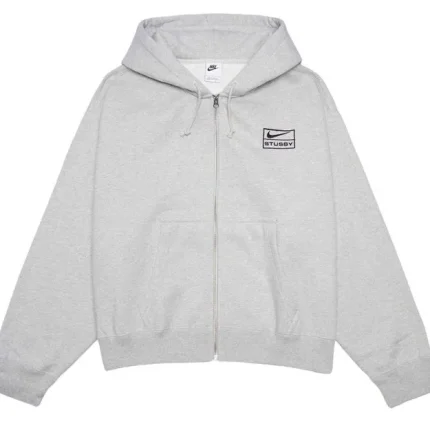Facing Frequent Pipe Leaks? Why Switching to PPRC Pipes Is the Smart Fix

I. Introduction
Frequent pipe leaks can be a constant headache for homeowners, builders, and facility managers. Beyond the annoyance, they lead to hidden water damage, mold growth, costly repairs, and increasing utility bills. Often, these leaks stem from outdated piping materials—corroded galvanized iron, brittle PVC fittings, or copper lines with failed joints. The solution? PPRC pipes (Polypropylene Random Copolymer), an advanced piping material designed to eliminate leaks and enhance system longevity. In this post, we’ll explore why switching to PPRC pipes is a smart investment, especially in Pakistan’s construction sector, where PPRC pipes in Pakistan are gaining wide acclaim. From heat-fusion joints to chemical resistance and cost-efficiency, discover how these durable pipes offer a future-proof fix.
II. Why Pipe Leaks Happen Frequently
Leaky pipes plague every building due to:
- Material Degradation:
- Galvanized iron rusts internally.
- PVC cracks under temperature or pressure stress.
- Copper corrodes in aggressive water.
- Galvanized iron rusts internally.
- Poor Jointing Methods:
- Threaded joints loosen over time.
- Solvent-welded PVC joints degrade and leak.
- Rubber gaskets lose elasticity.
- Threaded joints loosen over time.
- Thermal Cycling Stress:
- Repeated hot/cold cycles cause expansion, stressing joints.
- Repeated hot/cold cycles cause expansion, stressing joints.
- Pressure Surges:
- Water hammer and high-pressure damage are weak links.
- Water hammer and high-pressure damage are weak links.
- Aging and Fatigue:
- Over time, pipe walls thin out and develop cracks.
- Over time, pipe walls thin out and develop cracks.
These recurring leaks result in water damage, disruption, and liabilities. PPRC pipes and fittings are engineered to address each of these failure modes, offering a robust pipe system designed to resist leaks before they start.
III. What Are PPRC Pipes?
PPRC stands for Polypropylene Random Copolymer—a high-performance thermoplastic engineered for plumbing. Characteristics include:
- High thermal resistance, up to 95 °C, ideal for hot water.
- Excellent pressure tolerance with PN16–PN20 ratings.
- Smooth, inert interior prevents scale and corrosion.
- Chemical stability—no leaching of harmful substances.
- Compliance with international norms (ISO 15874, DIN 8077/8078).
Manufactured in rolls or straight lengths, It work with matching pprc pipes and fittings—elbows, tees, couplers—to form an integrated plumbing system. In Pakistan, branded lines are now widely available, and the pprc pipes and fittings price in Pakistan is competitive compared to copper or GI piping.
IV. How PPRC Pipes Prevent Leaks
PPRC plumbing eliminates leak-prone elements through:
- Heat-Fusion Joints
- Fusion welding produces a molecular bond, creating a seamless, continuous pipe.
- Eliminates loose fittings, gaskets, or adhesives susceptible to failure.
- Fusion welding produces a molecular bond, creating a seamless, continuous pipe.
- Flexibility and Expansion Tolerance
- Slightly flexible pipe walls absorb thermal expansion without cracking.
- Ideal for homes with fluctuating hot water use and solar heating.
- Slightly flexible pipe walls absorb thermal expansion without cracking.
- Corrosion-Free Structure
- Non-reactive plastic won’t rust or corrode, avoiding pipe thinning and pinhole leaks.
- Non-reactive plastic won’t rust or corrode, avoiding pipe thinning and pinhole leaks.
- Uniform Pressure Handling
- Withstands sudden pressure changes without bursting or weakening.
- Withstands sudden pressure changes without bursting or weakening.
- High Impact Resistance
- Unbreakable under stress, making it safe in buried or exposed plumbing.
- Unbreakable under stress, making it safe in buried or exposed plumbing.
Compared to copper’s pinhole leaks, PVC’s glue-joint failures, or GI pipe rust, PPRC pipes deliver enduring leak-proof performance in hot, cold, and pressure-variable environments.
V. Key Benefits of Switching to PPRC Pipes
Switching to PPRC pipes offers numerous advantages:
1. Longevity
- Designed to last 50+ years.
- No corrosion or metal fatigue over its lifetime.
2. Thermal Efficiency
- Low thermal conductivity keeps water hot.
- Saves energy and improves system responsiveness.
3. Low Maintenance
- Leak-proof joints need virtually no upkeep.
- No need for periodic inspections or seal replacements.
4. Health & Safety
- BPA-free, non-toxic for drinking water.
- No contaminants leaching into the household water supply.
5. Eco-Friendly
- Recyclable plastic reduces environmental impact.
- Less water waste from leaks supports eco-conscious living.
6. Speedy Installation
- Lightweight and easy to handle.
- Fusion welding is quicker than threaded or soldered systems.
Real-life examples: in multiple Lahore apartments, copper joints regularly failed under heat cycles. After switching to PPRC pipes, no leaks were reported in over two years of usage.
Long-term savings include fewer repair visits, energy bills down by 10–15%, and peace of mind—especially important for pprc pipes and fittings price in Pakistan, which makes quality systems affordable.
VI. Ideal Applications in Leak-Prone Systems
Best scenarios to use PPRC pipes include:
- Aging residential pipelines are prone to pinhole leaks.
- High-rise buildings where pressure surges cause joint failures.
- Commercial kitchens, hospitals, and schools with constant use and hot/cold cycling.
- Retrofit projects aiming to replace GI or PVC lines quickly.
- Solar/heater system connections need expansion tolerance.
These applications benefit most from PPRC’s leak-proof, durable, and heat-resistant properties.
VII. Cost Comparison and Long-Term Savings
| Cost Factor | PPRC Pipes | Copper / GI Pipes |
| Initial Material Cost | Moderate | High |
| Installation Time & Labor | Shorter & Cleaner | Longer and Messy |
| Maintenance & Repair | Minimal | Frequent |
| Energy Costs | Lower (heat-saving) | Higher |
| Water Damage Risk | Low | Higher |
While pprc pipes and fittings price in Pakistan may be slightly more than basic PVC, they significantly reduce repair costs and energy waste. Commercial properties report ROI in under 5 years, thanks to fewer call-backs and lower damage risks.
VIII. Choosing the Right PPRC Products and Installers
Stay leak-free by selecting quality products:
- Choose correct ratings: PN16 for hot water lines at up to 95 °C.
- Buy certified brands—look for DIN or ISO certification.
- Match with genuine fittings to ensure fusion weld quality.
- Hire certified technicians for heat fusion welding.
- Local supplier tip: inquire about pprc pipes and fittings price in Pakistan before purchase to avoid low-quality imports.
A quality installation using genuine components is key to long-term leak prevention.
IX. Conclusion: Stop Leaks Before They Start
Frequent pipe leaks aren’t just nuisances—they threaten structures, health, and budgets. It offer a forward-thinking, durable solution that addresses the root causes of leaks:
- Seamless fusion joints
- Corrosion resistance
- Thermal stability
- Long-term reliability
Upgrading to PPRC piping creates plumbing systems that last, save, and protect. If persistent leaks have you searching for a fix, it’s time to invest in PPRC pipes in Pakistan for a smarter, leak-free future. Contact certified suppliers for the best pprc pipes and fittings price in Pakistan and schedule an upgrade today.
FAQ Section
Q1: How long do PPRC pipes last before needing replacement?
With proper installation and usage, PPRC pipes last over 50 years, making them a reliable and lasting investment against leaks.
Q2: Are PPRC pipes suitable for both cold and hot water?
Yes. Rated for up to 95 °C, they work well for hot and cold water systems in residential and commercial settings.
Q3: What’s the difference between PPR and PPRC pipes?
PPRC (Random Copolymer) offers better thermal and pressure resistance than regular PPR, making it ideal for hot water plumbing.
Q4: Can PPRC pipes be installed in existing buildings?
Absolutely. Retrofits over outdated lines are fast and clean thanks to heat fusion and lightweight installation.
Q5: What is the average pprc pipes and fittings price in Pakistan?
Prices vary by diameter and brand, but high-quality certified PPRC kits are now cost-competitive with copper and come with long-term savings benefits.
Explore more content to fuel your curiosity and growth.



